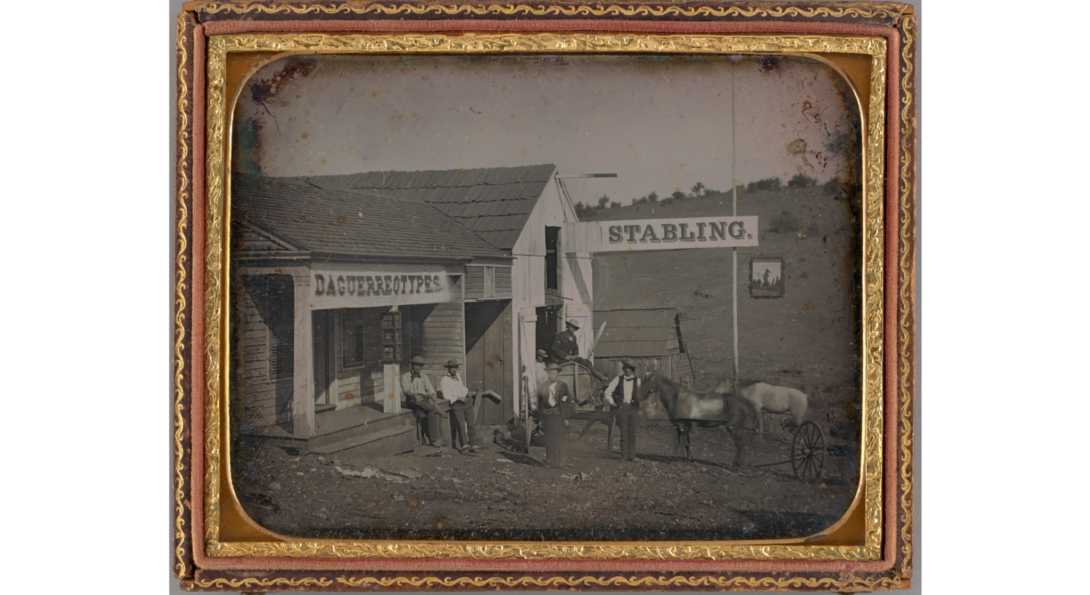Colbie Cook and Blake Stimson to participate in ‘After Daguerreotypes’ workshop at AIC

19th Century Photography Workshop
‘After Daguerreotypes’
Unknown maker; attributed to William L. Zuber, Untitled (Daguerreotype Studio and Russel & Co Livery Stable, Mokelumne Hill, California), 1852.
In the history of photography, daguerreotypes seem to represent both a beginning and an end.
These delicate objects mark an unprecedented achievement of fixing an image through chemical, not mechanical means. But because of their singularity as the output of a one-off direct positive process, daguerreotypes are not part of the story of reproducibility so firmly associated with photography, which began with the paper negative. Despite the contemporaneous existence of these technologies, the story of photography’s heroic invention usually brackets the daguerreotype. Photography “as we know it” comes after daguerreotypes.
And yet, daguerreotypes were often sources for images reproduced in many nineteenth-century publications, such as Harper’s Weekly. Through this relation to other media, daguerreotypes have been reproduced many times over. Their adaptation to the printed page is but one way that daguerreotypes are transformed after their making: other means include hand coloring; new cases and frames; and descriptive titles added by scholars, curators, and collectors to otherwise untitled images. Even as these objects traffic in clear representational traditions and typologies, the interventions that come ‘after’ a daguerreotype send us searching for more information on the makers, subjects, owners, and communities attached to them.
This workshop brings together a selection of daguerreotypes from the Art Institute of Chicago's Photography and Media department to ask: what do we need and want from daguerreotypes now? Considering questions of research, pedagogy, and display, what are we after and why? With the aforementioned questions in mind, we hope to animate a robust set of conversations in the Midwest that would inform future research directions for scholars actively exploring nineteenth-century photography.